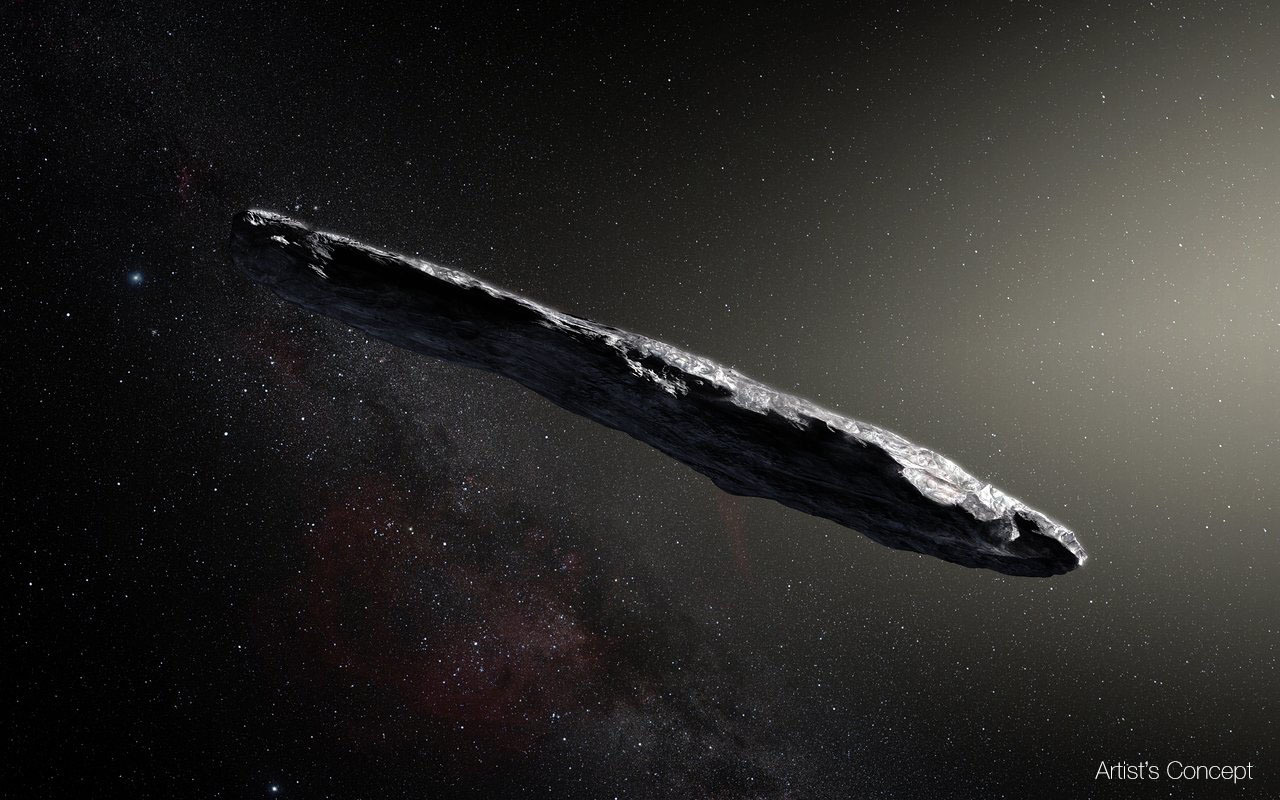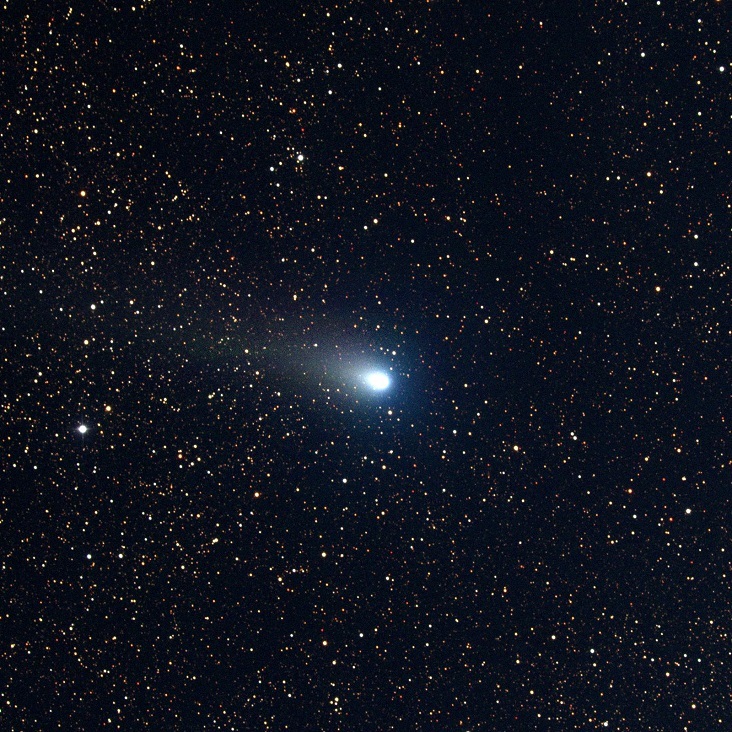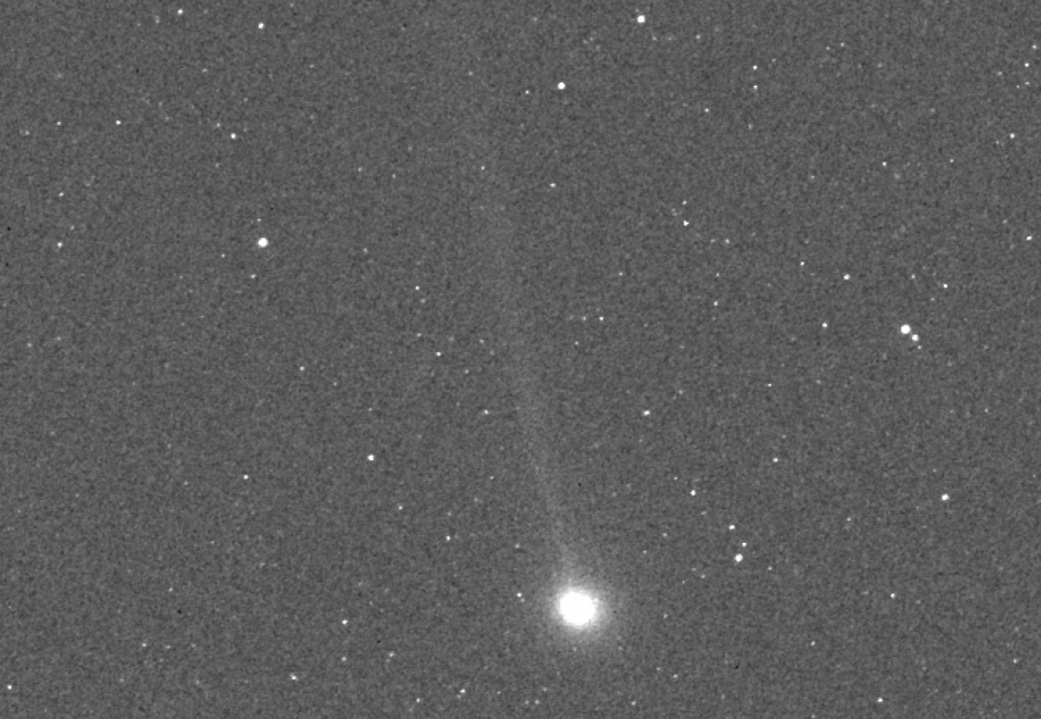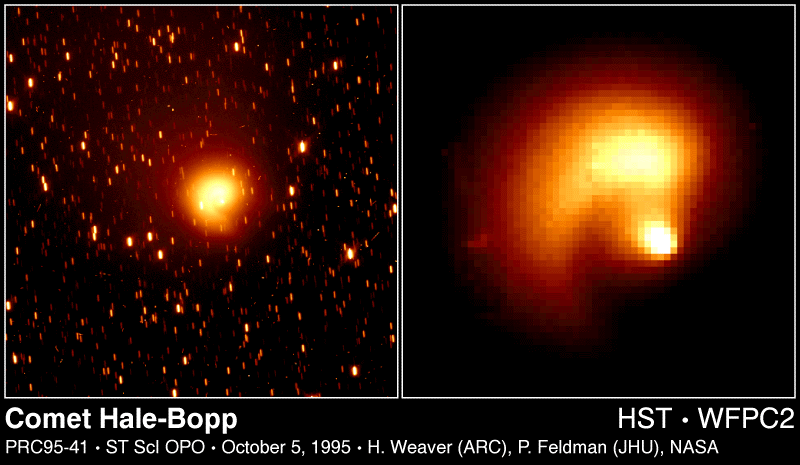 |
Comets are cosmic snowballs of frozen gases, rock, and dust that orbit the Sun. When frozen, they are the size of a small town. When a comet's orbit brings it close to the Sun, it heats up and spews dust and gases into a giant glowing head larger than most planets. The dust and gases form a tail that stretches away from the Sun for millions of miles. There are likely billions of comets orbiting our Sun in the Kuiper Belt and even more distant Oort Cloud.
The current number of known comets is:
3,869
|
| |
|
 |
Comet 103P/Hartley (Hartley 2) is a small, oval (or peanut) shaped comet -- its nucleus measures approximately one mile (1.6 kilometers) in diameter. It takes Hartley 2 about 6.47 years to orbit the Sun once. Hartley 2 last reached perihelion (closest approach to the Sun) in 2017.
Hartley 2 orbits the Sun within the asteroid belt, which lies between the orbits of Mars and Jupiter. Hartley 2 is a Jupiter-family comet. A Jupiter-family comet is defined as having an orbital period of less than 20 years and one that has been modified by close passages with the gas giant.
|
| |
|
 |
Comet 21P/ Giacobini-Zinner is a small comet with a diameter of 1.24 miles (2 kilometers). This comet takes about 6.6 years to orbit the Sun once. The last time comet Giacobini-Zinner reached perihelion (closest approach to the Sun) was on Feb. 11, 2012. The next perihelion passage will be in 2018.Each time that Giacobini-Zinner returns to the inner solar system its nucleus sprays ice and rock into space. This debris stream results in an annual meteor shower: the Draconids, which take place each year in early October.
The Draconids radiate out of the northern constellation of Draco the dragon. Most years the shower is weak, and many times very few meteors are seen. However, there are also Draconid meteor storms (sometimes called Giacobinid meterors) on record. A meteor storm is observed when one thousand or more meteors are seen per hour at the location of the observer. During its peak in 1933, 500 Draconid meteors were seen per minute in Europe. 1946 was also a good year for the Draconids, where 50 -100 were seen per minute in the U.S.
|
| |
|
 |
Comet 2P/Encke is a small comet. Its nucleus measures approximately 2.98 miles (4.8 kilometers) in diameter, which is about a third of the size of the object hypothesized to have led to the demise of the dinosaurs.It takes 3.30 years for Enke to orbit the sun once. Comet Encke has the shortest orbital period of any known comet within our solar system. Encke last reached perihelion (closest approach to the sun) in 2015.Comet Enke is the parent comet of the Taurid meteor stream.
The Taurids, which peak in October/November of each year, are fast meteors (65,000 mph or 104,607 kph) and are known for their fireballs. Fireballs are meteors that are as bright or brighter than the planet Venus (seen in the morning or evening skies at around a visual magnitude of -4). They may exhibit larger explosions of light and color and can persist longer than an average meteor streak. This is due to the fact that fireballs originate from larger particles of cometary material. Oftentimes, this particular shower exhibits fireballs on or around Halloween, making them known as the Halloween Fireballs.
|
| |
|
 |
Comet C/1995 O1 (Hale-Bopp) was discovered in July 23, 1995, independently, by both Alan Hale and Thomas Bopp. Hale-Bopp was discovered at the amazing distance of 7.15 AU. One AU is equal to about 150 million km (93 million miles).Also called the Great Comet of 1997, comet C/1995 O1 (Hale-Bopp) is a large comet with a nucleus measuring approximately 37 miles (60 kilometers) in diameter. This is about five times the size of the object hypothesized to have led to the demise of the dinosaurs.
Due to its large size, this comet was visible to the naked eye for 18 months in 1996 and 1997.It takes about 2,534 years for Hale-Bopp to orbit the sun once. Hale-Bopp last reached perihelion (closest approach to the sun) on Apr. 1, 1997.
|
|






